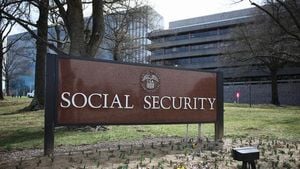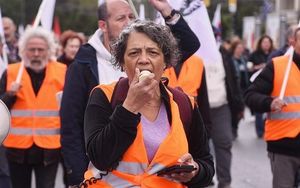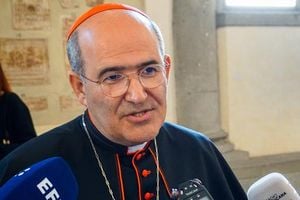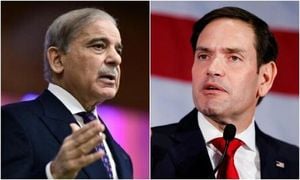As the sun rises on May 2, 2025, election results are trickling in from across England, revealing a landscape of political shifts and intense competition. The local elections and a parliamentary by-election in Runcorn and Helsby have drawn significant attention, with voters eager to see how their choices will shape local governance.
In North Tyneside, Labour's Karen Clark has managed to hold onto her position as mayor, albeit by a razor-thin margin of just 444 votes over Reform UK's John Falkenstein. Clark secured 16,230 votes, accounting for 30.2% of the total, while Falkenstein garnered 15,786 votes, or 29.4% of the vote share. This close contest underscores the shifting dynamics within local politics, as Reform UK makes noticeable inroads in traditionally Labour strongholds.
The results from the Runcorn and Helsby by-election are particularly noteworthy, with candidates and political analysts alike describing the race as "nip and tuck" and "way too close to call." Reform's deputy leader, Richard Tice, expressed optimism earlier, stating there is a "seismic shift" occurring in British politics, indicating a surge in support for Reform UK. However, reports of discrepancies in ballot bundles have raised concerns about potential delays in announcing the final results.
In Runcorn, the turnout was 46.33%, with 32,740 votes cast, a decrease from the 58.7% turnout seen in the previous general election. This decline in voter engagement could reflect broader trends affecting local elections, as citizens grapple with various pressing issues.
Meanwhile, across Lancashire, the county council elections closed with anticipation of a four-way battle among the Conservatives, Labour, Reform UK, and the Liberal Democrats. The Green Party also expressed confidence in adding to its two-seat tally in some areas. Results are being counted throughout the day, with the first clear outcomes expected to emerge by afternoon.
In the West of England, the mayoral election saw a turnout of just 30%, with 205,557 ballots cast from an electorate of 682,951. This figure is a slight improvement from the 29.72% turnout in 2017, yet still lower than the 36.61% recorded in 2021. Candidates in this election included Aaron Banks from Reform UK, Labour's Helen Godwin, and the Liberal Democrats' Oli Henman, among others.
As the counting processes unfold, reports from various counts indicate that the atmosphere is tense yet hopeful. In Bristol, political reporter Hannah Miller noted that while counting is nearly complete, a few ballots remain pending adjudication. In Yate, reporter Martin Jones confirmed that teams are meticulously checking already counted bundles of ballot papers, indicating we are in the final stages of the counting process.
Across the nation, the Conservatives are bracing for heavy losses, having defended 954 seats in this election cycle. Early results from councils indicate that Reform UK is making significant gains, particularly in areas where they previously had little presence. In Northumberland, for example, Reform has reportedly made inroads at the expense of Labour.
In Staffordshire, the Tory leader Alan White lost his seat to Reform UK's Tracey Dougherty, who received 1,197 votes compared to White's 958 in Lichfield Rural East. This result is part of a broader narrative of Conservative losses in regions that once leaned heavily in their favor.
As the day progresses, local news outlets such as Blog Preston are providing live updates on the counting process, ensuring that voters remain informed about the evolving political landscape. The results from Preston, South Ribble, Chorley, and other areas are being closely monitored, with the potential for significant shifts in council compositions.
Amidst the excitement of election night, anti-Reform UK protests also emerged outside the Runcorn and Helsby count, reflecting the contentious atmosphere surrounding these elections. Demonstrators voiced their concerns about the Reform party's policies and leadership, particularly targeting Nigel Farage, who was expected to make an appearance at the count but has since delayed his arrival.
As results continue to be tallied and verified, the implications of these elections will undoubtedly resonate within the political community and among the electorate. With a total of 1,641 council seats up for grabs across 23 local authorities in England, the outcomes are set to shape local governance and influence national political narratives moving forward.
In conclusion, the local elections and by-elections in England have provided a platform for new voices and parties to emerge, challenging the traditional political order. As the dust settles, it will be crucial to analyze how these results reflect the concerns and priorities of voters across the country.





